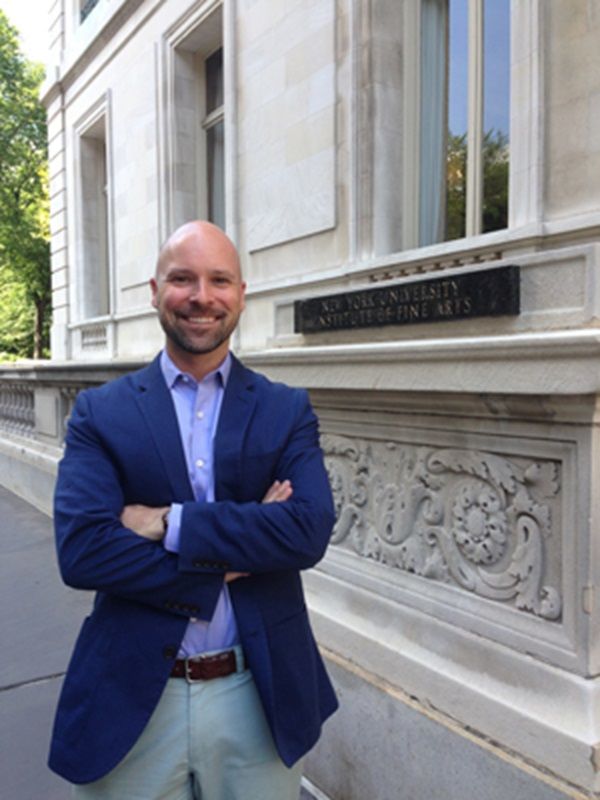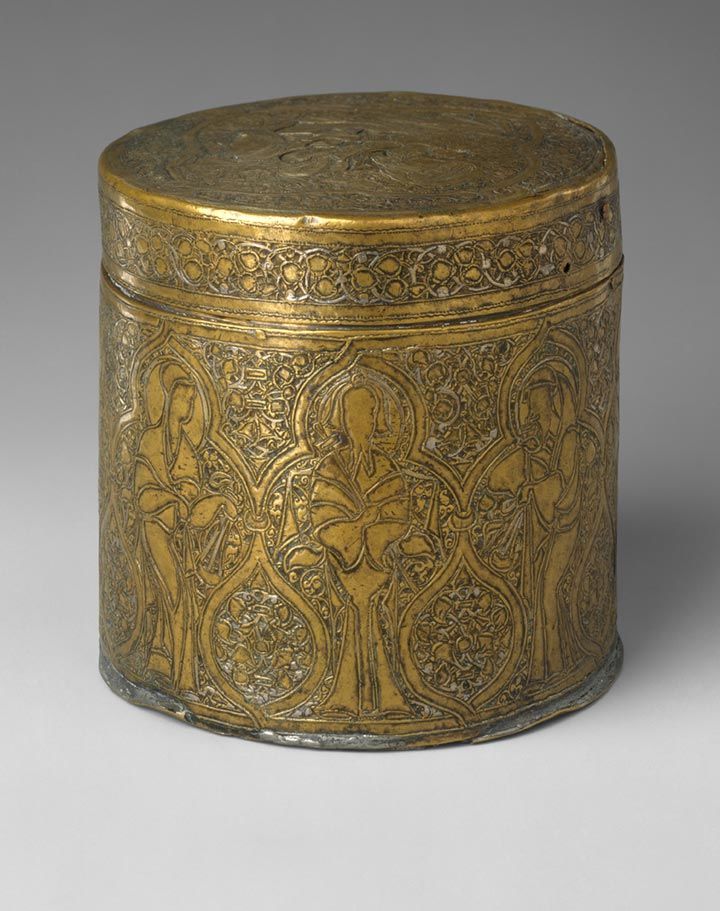Jerusalem in Stories
I arrived at the Institute of Fine Arts and the Curatorial Studies program fresh from a "first career" as a practicing lawyer in New York City. Part of the joy of returning to graduate school to pursue a degree in Art History was the opportunity to explore new interests and to find creative inspiration in the richness of centuries of artistic production, but I was also looking for continuities—for parallels between my old professional life as an attorney and my new career as an art historian.

Left: David P. Bardeen, Curatorial Studies alumnus
During my first semester at the IFA, I took the course Jerusalem in the Middle Ages—presented in anticipation of the exhibition Every People Under Heaven: Jerusalem, 1000–1400, scheduled to open at The Cloisters in 2016—taught by Dr. Barbara Boehm, Paul and Jill Ruddock Senior Curator for The Met Cloisters in the Department of Medieval Art and The Cloisters, and Met curator Dr. Melanie Holcomb. In the course, one parallel that emerged almost immediately was the thrill, and challenge, of storytelling. An effective attorney must navigate a vast amount of conflicting information to create a story that a judge or jury will understand. Jerusalem in the Middle Ages presented a similar challenge, albeit in a vastly different context: examining centuries of artworks from a highly contested part of the world in order to identify thematic strands that will engage the visitor.
Early on, Dr. Boehm asked the class a surprisingly difficult question: "If someone were to ask you whose story we are telling in this exhibition, what would you say?" She suggested one possible response that particularly resonated with me: "We are telling everyone's story and no one's story."
To assemble some of the stories to be told in Every People Under Heaven, each student presented a version of the exhibition from the perspective of a different historical figure: William of Tyre, the historian and clerical figure; Ibn Battuta, the Berber traveler and chronicler; and Melisende, legendary queen of the Latin Kingdom, to name just a few. What emerged was a web of intertwined narratives and a fascinating assemblage of works of art: manuscripts, metalwork, jewelry, architectural fragments, and other objects that reflect Jerusalem's extraordinary cultural diversity. Class members also grew to appreciate the intense longing for Jerusalem shared by Jews, Muslims, and Christians during the period covered by the exhibition.
As we crafted our stories, one challenge addressed by the class concerned the criteria that ought to be used in the selection of works of art. Some objects—standard pieces of armor or household wares, for example—are of historical interest, but the class disagreed as to whether they met the high standards of artistry and craftsmanship needed for inclusion. Conversely, some pieces of stunning beauty, registering very high in "wow" factor, were difficult to place thematically or had more tenuous connections to Jerusalem itself.
The class also wrestled with questions of object classification. One of the more fascinating groups of objects produced across the region in the Middle Ages is a set of twenty metalwork pieces from thirteenth-century Syria, which appear to combine Islamic design features with Christian imagery. These included a pyxis, or cylindrical vessel, in the Met's collection thought to depict Christ's entry into Jerusalem). The class discussed how these objects ought to be described, given how little is known about their patronage and manufacture.
Of course, the class wasn't entirely focused on wrestling with issues of storytelling and object selection. We also discussed elements regarding how best to bring Jerusalem alive to visitors to the exhibition—exhibition-design features, cultural tie-ins, and the types of sights, scents, and sounds that would most capture the city's allure.

Left: Pyxis depicting Christ's entry into Jerusalem, mid-13th century. Syrian, Ayyubid period (1169–1260). Islamic. Brass, hammered, chased, inlaid with silver and black compound; H. with lid 4 1/2 in. (10.5 cm), H. without lid 3 1/2 in. (8.9 cm). The Metropolitan Museum of Art, New York, Rogers Fund, 1971 (1971.39a, b)
Participating in the Curatorial Studies program was a thrill and has encouraged me to think about other ways in which one can participate in art-historical storytelling. Partially by design, partially by serendipity, I have taken a broad range of courses at the IFA such as Italian Baroque, Late Antiquity, and Latin American Modernism. A potential long-term project of mine would be to publish a collection of short stories about some of the most memorable works of art that I have studied, woven together and interspersed with personal and professional reflections.
I also currently give tours at the Metropolitan Museum in English and Italian, as part of the Museum's exceptional Guided Tours program. It is a thrill to see visitors identify thematic strands between different works of art across the seventeen curatorial departments, appreciating not just the breadth of the Met's collection but also the extent to which artists draw inspiration from each other and from other historic traditions and periods.
Each object has many stories to tell, and one of the things that the Met's Curatorial Studies program does brilliantly is teach students how to tease stories from the objects. This must be done gently enough so that Museum visitors can create their own stories, and so that the works of art themselves, their materials and craftsmanship, never get lost in the broader narrative.